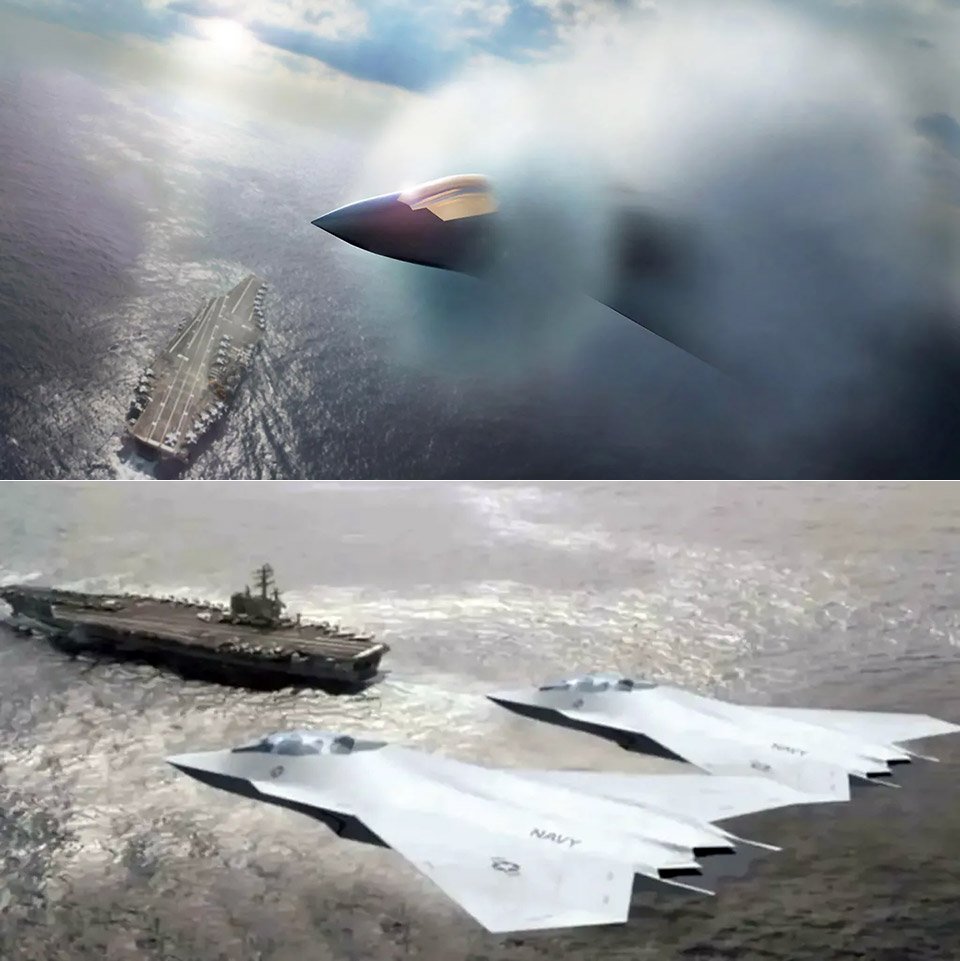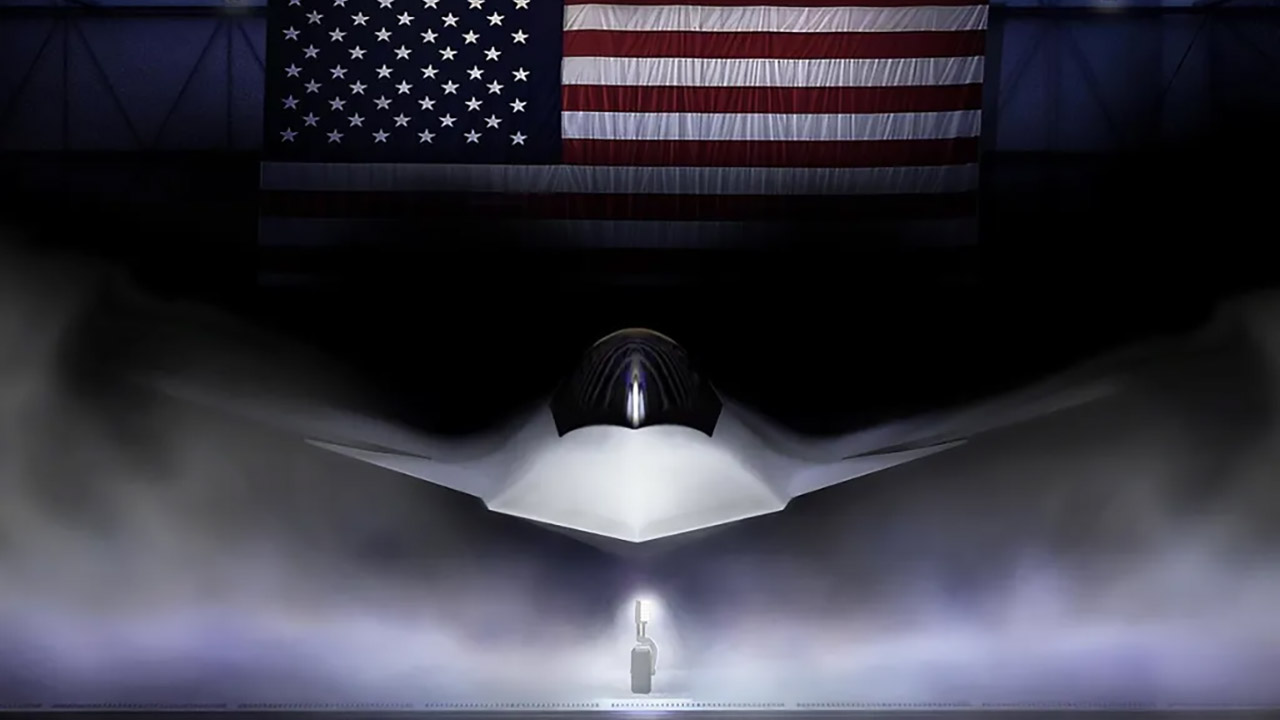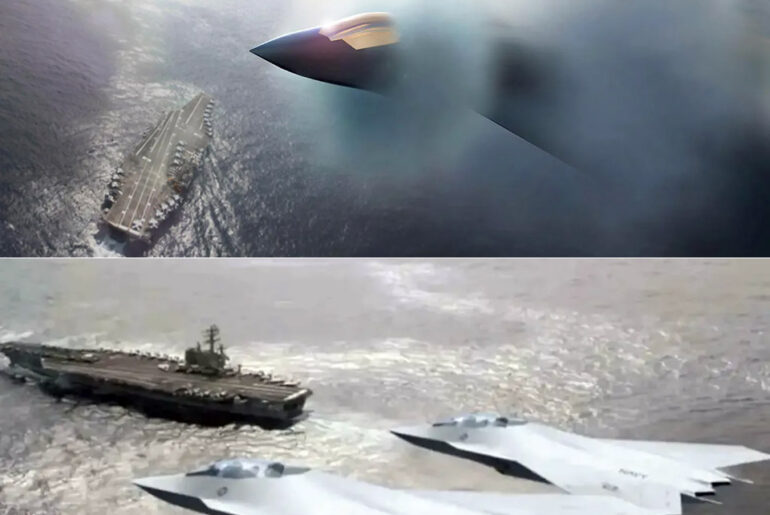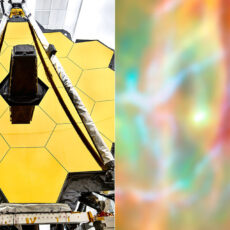
Boeing has given us a glimpse of the F/A-XX, its contender for the US Navy’s next-generation fighter. It was unveiled at the Tailhook Symposium and is the foundation of naval aviation in the 2030s.
Carrier-based fighters have unique challenges because they must launch from a pitching deck, survive saltwater and land on a runway shorter than a football field. Boeing’s F/A-XX is designed to address those challenges while replacing the aging F/A-18 Super Hornet which will have 9,000 hours by the early 2030s. The new plane will have 25% more range than current fighters which is critical for operations across the wide Pacific where China’s long range missiles loom large. That extra range combined with the ability to refuel in mid-air could give carrier air wings an operational footprint of 11 million square miles which is bigger than North America.
- Intelligent Follow-Me Camera: Harnessing advanced tracking algorithms and a following speed of up to 15 mph, the HOVERAir follow-me self-flying drone...
- Portability and Simplicity Redefined: Weighing a mere 125g (4.41oz), lighter than an iPhone and exempt from the hassle of FAA registration. The...
- Automatic and Intelligent Flight Paths: Experience hands-free flying with the pre-programmed flight paths, including Hover, Follow, Zoom Out, Orbit,...
Stealth is a key part of the F/A-XX design although Boeing’s approach has raised some concerns. The design shows a sleek plane with a pointed nose and bubble canopy like the F-47, Boeing’s 6th gen fighter for the Air Force. What catches the eye are the canards which are short forward mounted wings that improve maneuverability especially at low speeds during carrier landings. But canards increase a jet’s radar signature so they compromise the stealth of a 6th gen fighter. Boeing’s decision to include them reflects the trade off between the agility needed for maritime ops and absolute radar invisibility.
It’s built to operate in contested skies and will work with drones to be the quarterback for unmanned aircraft, extending its reach and firepower. This will be highly dependent on AI to handle massive amounts of sensor data and distribute it across the globe. Unlike the Air Force’s F-47 which uses a fancy engine for long range ops the F/A-XX will use a derivative powerplant which is a more cost effective and time saving choice. This engine will still need to provide the thrust for hypersonic missiles and possibly directed energy weapons like lasers which could change the nature of air battle.
Boeing is competing against Northrop Grumman, the only other contender after Lockheed Martin’s design failed to fulfill Navy specifications in March 2025. Northrop Grumman’s picture, which was posted weeks ago, depicts a sleek, organic shape with no canards and complete stealth. The difference between the two is night and day: Boeing’s plane resembles agility and stealth, while Northrop Grumman’s resembles near-invisibility. The Navy will choose a design that balances cost, capability, and carrier compatibility. The F/A-XX program is still in operation because to congressional financing of $1.4 billion from the Senate and $972 million from the House.

Boeing’s confidence in the F/A-XX comes from a $2 billion investment in facilities like the Advanced Combat Aircraft Assembly Factory in St. Louis, Missouri. This factory is already building the F-47 and could build both if Boeing wins the Navy contract. Company leadership, including CEO Steve Parker, say the US defense industry can support two 6th gen programs at once. The similarities between the F/A-XX and F-47 – same cockpit, same tailless design – means Boeing is counting on economies of scale and common parts to speed up production and reduce costs.
[Source]










